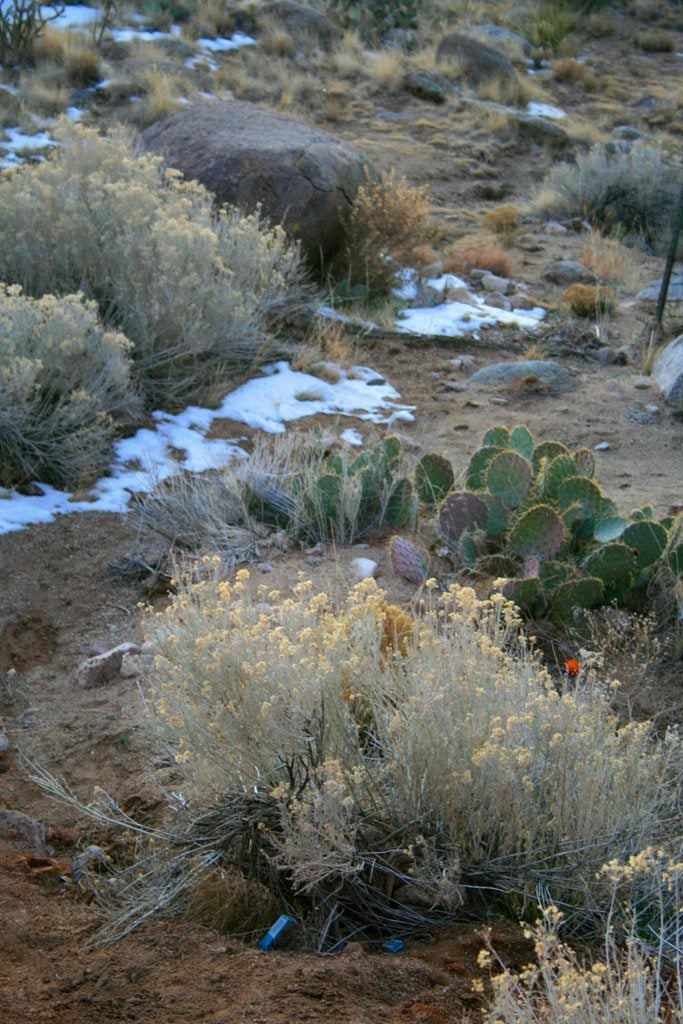Desert Winter Garden: Tips For Winter Gardening In Desert Regions


Desert dwellers don't face the same obstacles in winter gardening that their northern compatriots face. Gardeners in warmer, arid climes should take advantage of an extended growing season. There are numerous plants for winter desert gardens, which will thrive in slightly cooler temperatures. Caring for desert plants that are in ground for year-round landscaping takes some special maintenance and attention. They may be exposed to colder temperatures and lessened solar heat and light. A few adjustments in your gardening strategy will help protect the desert winter garden.
Winter Gardening in Desert Climates
The extra heat and light of desert zones sound great to a cold-season gardener like me. However, desert environments have a widely fluctuating temperature during the winter which can cause stress on plants. The movement of the sun during the winter solstice brings diminished sunlight and less angled rays that produce less light than spring and summer sun exposure. On the plus side, freezing temperatures are not the norm and average daily temperatures are still warm enough to allow plants to grow, albeit slower. Rainfall is also limited on the desert winter garden, which means regular irrigation is a necessity. Installation site concerns such as slope, wind exposure, and soil type also need to be taken into consideration.
Winter Desert Gardening Specs
The desert winter garden is open to elements such as cold, wind, and extreme dryness. Evening temperatures do dip into the freezing level. Plant specimens close to the home or in valleys to protect plants from cold snaps and freezes. Dry soils hold cold better than moist soils. Consistent watering takes advantage of this rule by helping to warm the earth. Make sure any tender plants are located in a sheltered area to protect them from drying and damaging wind. Slopes are of particular concern, as they may be facing oncoming winds and moisture runs off of angled surfaces, creating even drier conditions. Winter gardening in desert climes still requires the satisfaction of basic needs. The soil in desert areas tends to be porous to gritty and an amendment with compost can improve the conservation of moisture and increase nutrient density.
Plants for Winter Desert Gardens
The longer growing season means the veggie gardener can play for an extended period of time and start plants earlier. Edible plants for winter desert gardening would include garlic, cool-season greens like kale, and many other root crops such as parsnips. During the day you can bring your seed flats outdoors to get used to solar rays but don't forget to bring them inside at night when temperatures dip. Native and dormant bare-root plants are fine if you install them on a warmer winter day and protect them for a couple of weeks from freezing. Pea bush, penstemon, golden barrel, and chuparosa are some native and introduced species that thrive in desert winters.
Caring for Desert Plants in Winter
Existing plants and those newly installed will benefit from protection from freezes. Watch the local weather report and get ready to act. All you need is some clear plastic or burlap, wood stakes, rope, or plant ties and a plan. Construct teepees over sensitive plants to protect them from the touch of cold. Even a simple row cover will help keep heat in at night. Water the plants regularly to warm and moisten the soil. Winter is also the perfect time to do some maintenance like light pruning, soil amendment, aerating, moving plants to new locations, and building new beds.
Sign up for the Gardening Know How newsletter today and receive a free copy of our e-book "How to Grow Delicious Tomatoes".

Bonnie Grant is a professional landscaper with a Certification in Urban Gardening. She has been gardening and writing for 15 years. A former professional chef, she has a passion for edible landscaping.